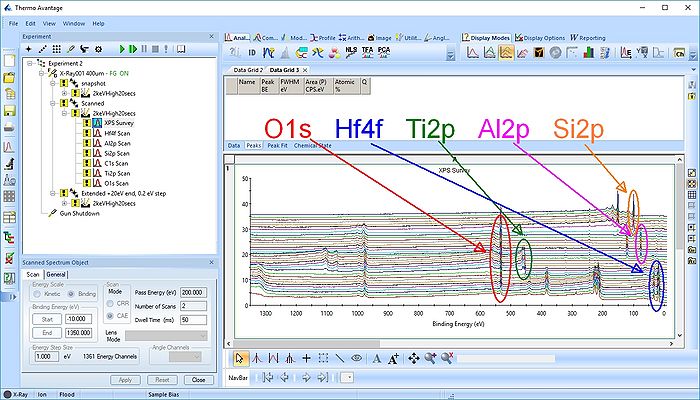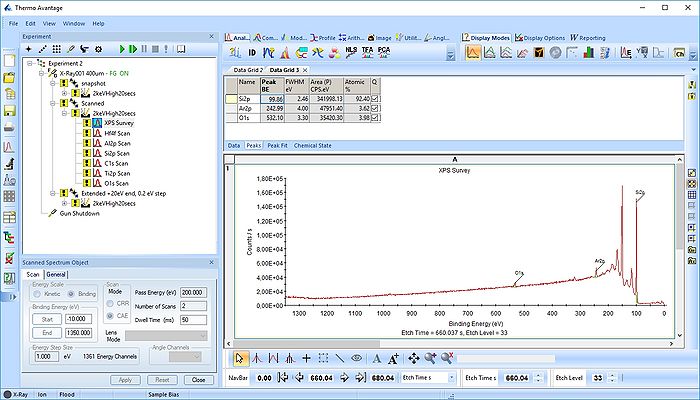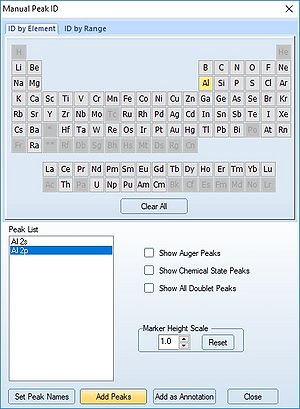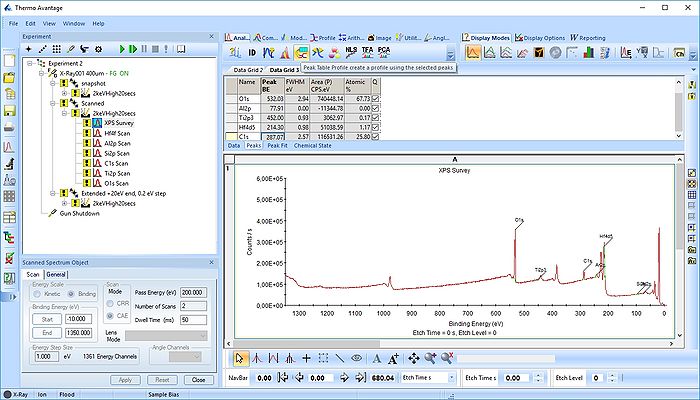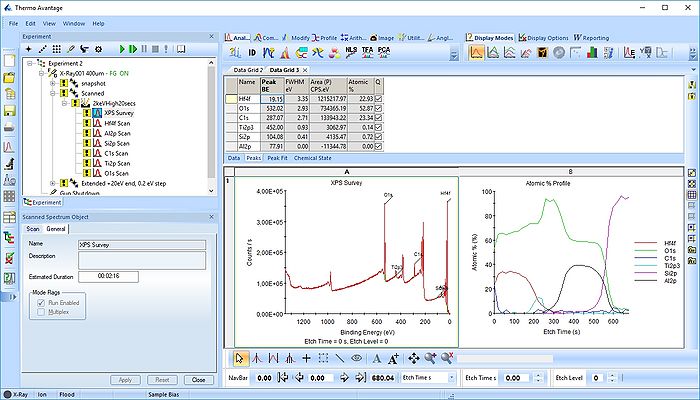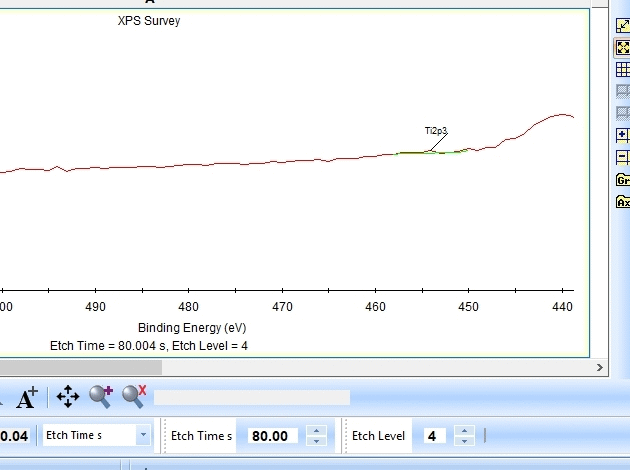Specific Process Knowledge/Characterization/XPS/Processing/ALDSandwich1/2Survey: Difference between revisions
| Line 25: | Line 25: | ||
As seen above there is only a very small amount of Ti2p. Why is this? Let us zoom in onto the Ti2p peak and see how the fitting goes. | As seen above there is only a very small amount of Ti2p. Why is this? Let us zoom in onto the Ti2p peak and see how the fitting goes. | ||
[[File:ALD sandwich Ti survey.gif|630px]] | |||
In the gif file above one can see the etch level in the bottom center right. The fitting routine adds a background to the data and subtracts it from the data before the peak is fitted. This background is shown with a light green color. It is clear that something goes wrong; the fitted backrground eats up the majority of the peak. The result is that the fitted Ti2p peak is much too small - then oxygen is seen as the only peak in the spectrum. | |||
Revision as of 13:53, 16 October 2018
Survey spectrum processing
This analysis is continued from here.
Under Display options select 'Stacked Chart View' as seen below. One can see that the peaks in the sandwich emerge and disappear as the depth profile progresses.
Pressing the Automatic Survey ID button will therefore only identify the elements present at each individual level. This is shown below for level 33.
We therefore have to add the remaining peaks manually - this is done by pressing the 'ID' button. In the panel below, select the elements from the periodic table, highlight the peak as shown below with Al2p and press 'Add Peaks'.
Once all the peaks have been added to the peak table, one can create a profile as shown below. Among the profile types choose 'Atomic %'.
In the profile below there is one problem.
As seen above there is only a very small amount of Ti2p. Why is this? Let us zoom in onto the Ti2p peak and see how the fitting goes.
In the gif file above one can see the etch level in the bottom center right. The fitting routine adds a background to the data and subtracts it from the data before the peak is fitted. This background is shown with a light green color. It is clear that something goes wrong; the fitted backrground eats up the majority of the peak. The result is that the fitted Ti2p peak is much too small - then oxygen is seen as the only peak in the spectrum.

